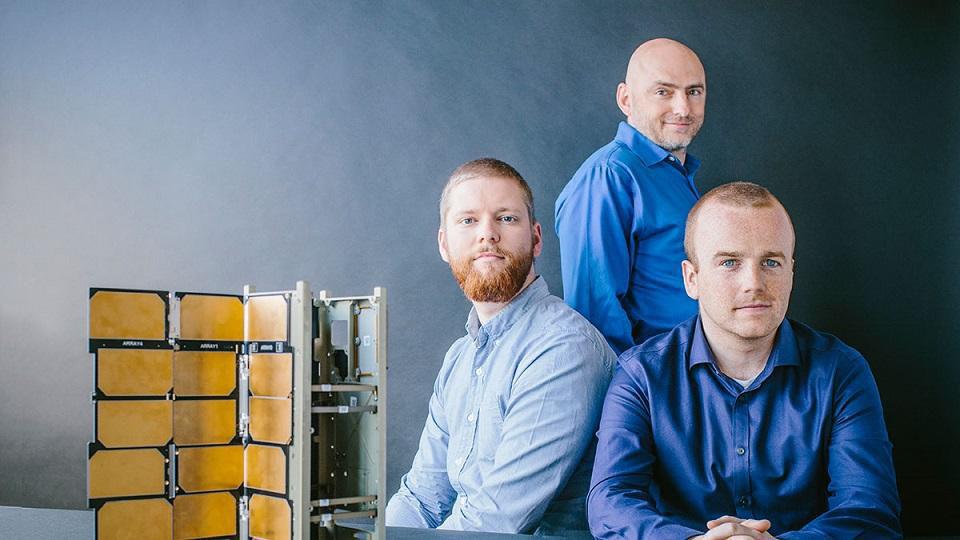Blood diagnostics on Google ARA modular smartphone
Modular, sustainable phone design
Project Ara was a modular smartphone project under development by Google. The project was originally headed by the Advanced Technology and Projects team within Motorola Mobility while it was a Google subsidiary. Google retained the ATAP group when selling Motorola to Lenovo, and it was placed under the stewardship of the Android development staff; Ara was later split off as an independent operation. Google stated that Project Ara was being designed to be utilized by “6 billion people”.
The original modular phone sustainable concept was conceived by Dave Hakkens [https://www.youtube.com/watch?v=_wwrIpv38nE].
Our team
The “special forces” team I have put together was stellar, young, dynamic, coming from west and central europe, and most of all: hungry.
Hungry for knowledge, recognition, hungry for camera lights, hungry for money, hungry for showing to the world that we know how to do things with very little to no support.
Ten students and young professionals were willing to join the ship, alongside investors from Africa and South America thanks to my colleague and co-founder Vincent.
Project ARA team
Project Ara was developed and was led by Paul Eremenko. The project fell under Regina Dugan, who run Google’s Advanced Technology and Projects (ATAP) organization. Both Eremenko and Dugan worked previously at DARPA / the The Defense Advanced Research Projects Agency is a research and development agency of the United States Department of Defense, with 1 billion $ budget per year. The core Project Ara team at Google consisted of three people, with most of the work being done by outside contractors.

Mrs. Regina Dugan described a concept of rapid prototyping of large projects in her Harvard Business Review article “Special Forces Innovation: How DARPA Attacks Problems”.
A special breed of project leader.
The project leader orchestrates the entire effort. He or she determines what pieces of work are needed to produce a specific result, conducts a proposal competition, and contracts organizations to do the work. (These organizations assemble whatever subcontractors they require.)
Project leaders who can successfully lead DARPA-like efforts possess the skills of the best CEOs of science- or engineering-based start-ups. Some project leaders may have held such positions. Others may come from academia, government labs, corporations, and nonprofits. They need to have deep technical or scientific knowledge, be natural risk takers, and be thought leaders who can create a vision that inspires an entire community.
Project leaders oversee the collection of performers, manage the technical details, and make all major decisions. They handle budgets, contracts, execution issues, speaking engagements, and customer relations. At DARPA that may entail explaining a project in three minutes to a four-star general who may or may not have a technical background, delivering a technical talk at a research conference, or working out intellectual property concerns with a university.
Many, but not all, project leaders have PhDs. Typically, they’re in their thirties or early forties, five to 10 years past earning their last degree, and already have made important achievements (delivering a product to market, successfully leading a university research center, starting a company). Confidence is important. These midcareer leaders may recruit people who are older and more accomplished; they must be able to hold their own.
They rarely have MBAs. The skill set that you acquire in business school is often about defining the market opportunity, writing a plan, and then faithfully executing it. By contrast, DARPA and ATAP are more focused on managing constant flux—building, replanning, changing tack, and moving talent in and out as project needs shift.
How do you find such leaders? At DARPA we found them through our networks and those of the agency’s current and former program managers, office directors, and performers. In the roughly three years we headed DARPA, about 75 of the 100 program managers changed as programs ended and others began. We did not have trouble finding exemplary people to fill those positions.
At Motorola Mobility, we are tapping our networks too, of course. We also have an expanded set of people within Motorola and Google who seek bold, fast, project-based work. Sometimes we find them; more often, they find us. Additionally, we use industry recruiters to identify talent.
DARPA has multiple attractions: Performing service to your country, the honor of being asked to work for an elite organization with a storied history, and the opportunity to pursue something amazing, often countercultural.
As an example, in 1992, university and industry efforts in MEMS were focusing on the wrong thing—the miniaturization of the devices. An unconventional minority opinion was that the opportunity lay in the integration of electrical, sensing, and actuation with signal processing and computing, and in building the devices with the same materials and processes used to manufacture semiconductors. That meant placing the highest priority on fabrication, system design, and design tools. DARPA not only permitted that view to emerge; it encouraged it. As a result, the agency was able to recruit talented leaders and performers.
The DARPA model gives exceptional leaders an environment where they can pursue what others may think is a crazy idea, challenge an entire industry, or catalyze the formation of one. Because they’re not permanent employees, project leaders worry less about rocking the boat and jeopardizing their careers. They focus instead on changing the world. And many of them do.
At ATAP, we give project leaders the right to be impatient, as we did at DARPA. They refuse to wait for obstacles to be cleared. (One week of delay is 1% of an ATAP project leader’s time at the organization.) Because our structure is flat, they elevate issues almost immediately to us. We clear them fast. This creates tremendous speed and momentum.
ATAP doesn’t have all of DARPA’s attractions. But it does share a vital one: the opportunity to make a difference and realize a bold vision. In addition, it gives people a chance to work for an elite commercially focused team in a fast-paced industry and at higher compensation than DARPA can offer. As ATAP proves in the coming years that it can innovate like DARPA, we expect the network of enthusiastic, qualified candidates to grow.
Blood diagnostics on a modular smartphone




Water quality analysis on a smartphone







